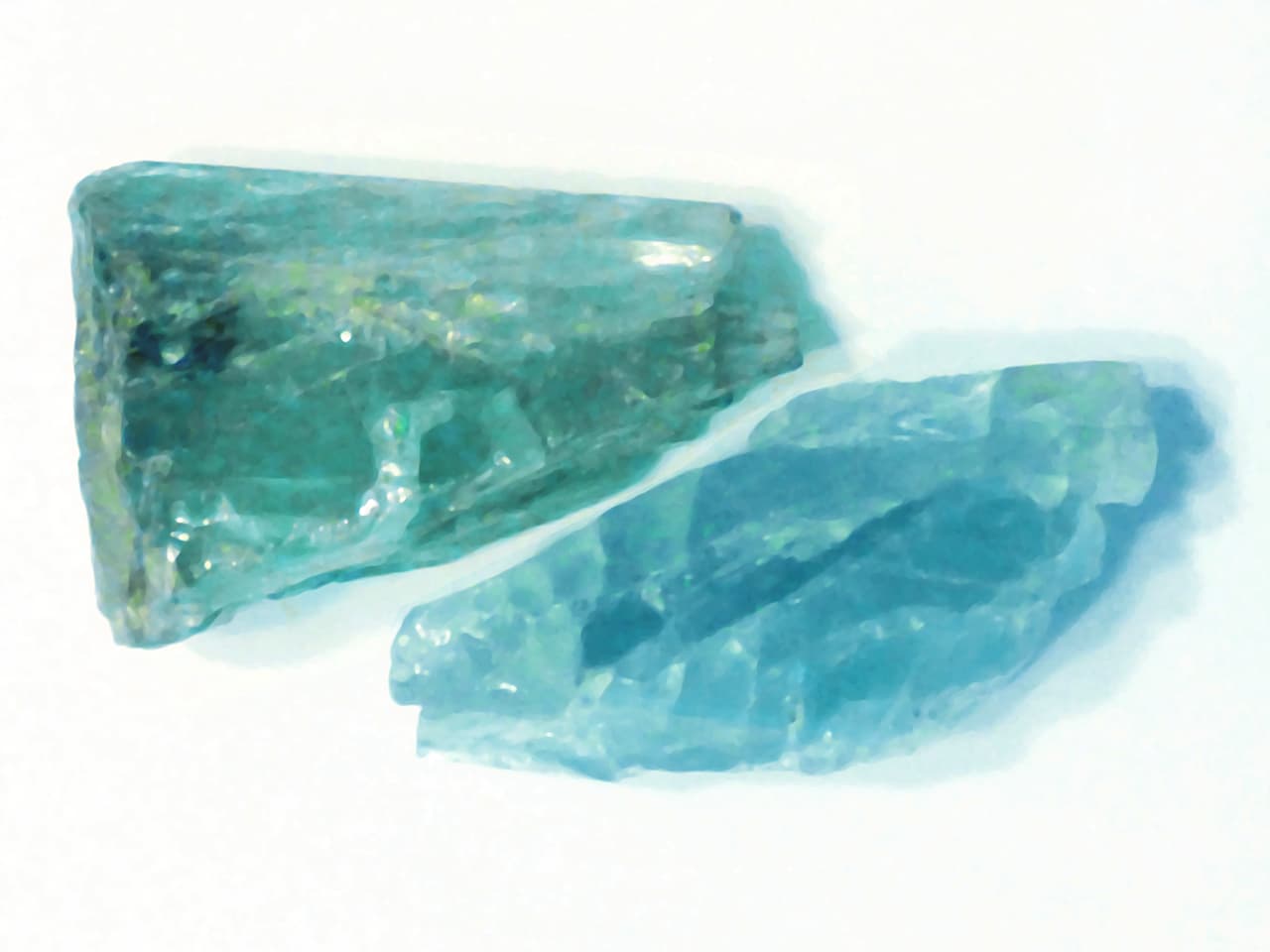Aquamarine Enhancements
The most common aquamarine enhancements try to turn blueish green stones pure blue. Learn how heating and other aquamarine treatments work.
2 Minute Read
Answer: The most common aquamarine enhancements try to make the gem's color bluer. Heating is the principal technique used to accomplish this. Other treatments try to improve aquamarine's clarity.
Aquamarine Heat Treatment
Most mined aquamarine rough has a blueish green color, either a blue body color with green highlights or a green body color with blue highlights (a sort of "sea foam" color). Naturally blue aquamarines do occur, but these represent a mere fraction of the mined material.
Interested in this topic?
This article is also a part of our Aquamarine Specialist Mini Course, in the unit Identification of Aquamarine.
Currently, most gem and jewelry consumers prefer blue aquamarines, and a relatively simple heat treatment can remove an aquamarine's greenish hue. So, not surprisingly, treatments to produce blue colors are almost routine. Nearly all aquamarine gems on the market today have undergone this heat treatment.
How Does the Heat Treatment Work?
In aquamarines, when ferric iron (Fe3+) replaces aluminum (Al) atoms in the beryl chemical formula, these light absorbing impurities will give the stone a yellowish color. On the other hand, ferrous iron (Fe2+) replacing Al will give the stone a blue color. Both types of iron substitutions occur frequently in mined aquamarines. This combination causes these gems to appear typically blueish green.
When subjected to a relatively low-heat treatment of 700-800° F (371-426° C) in a reducing (oxygen-free) environment, the ferric iron content in aquamarines converts to ferrous iron. Thus, blueish green stones become bluer. When successful, the process creates an almost pure sky-blue aquamarine.
However, this enhancement isn't always practical. Even after several cycles of treatment, many aquamarines retain a greenish tinge. Subjecting them to higher temperatures may lead to discoloration.
Is Heating Aquamarines an Acceptable Practice?
Heat treatment results are permanent and produce a more salable color. The treatment itself is also undetectable. For these reasons, the gem and jewelry industry widely accepts these particular aquamarine enhancements. Moreover, the industry recommends that any gem report for a pure blue aquamarine state that the stone may be heat treated. Untreated aquamarines would be considered quite rare.
Radiation Treatment
Irradiation is a less common method for enhancing aquamarine color. Colorless or light pink beryl gems subjected to neutron and gamma radiation take on a blue, "maxixe-type" color. However, unlike heat treatment results, this new shade isn't stable. It will gradually fade when exposed to light. As a result, the gem and jewelry industry doesn't consider radiation treatments to be acceptable aquamarine enhancements. (This treatment is very uncommon).
Clarity Enhancements
Aquamarine crystals usually grow naturally without eye-visible flaws. Thus, they frequently receive better clarity grades than their fellow beryl stones, emeralds. Nevertheless, aquamarines do sometimes have noticeable inclusions. Since aquamarines with good clarity are common, any such flaws can lower their value considerably.
To improve poor clarity, aquamarines may undergo fracture filling with epoxy resins. This is a rare but accepted aquamarine treatment, as long it's disclosed to the consumer.
International Gem Society
Related Articles
Aquamarine Value, Price, and Jewelry Information
Buying Gemstones in Afghanistan: A Beginner’s Guide
Six Famous Aquamarines
A Visitor’s Guide to Colorado Gemstones
Never Stop Learning
When you join the IGS community, you get trusted diamond & gemstone information when you need it.
Get Gemology Insights
Get started with the International Gem Society’s free guide to gemstone identification. Join our weekly newsletter & get a free copy of the Gem ID Checklist!
